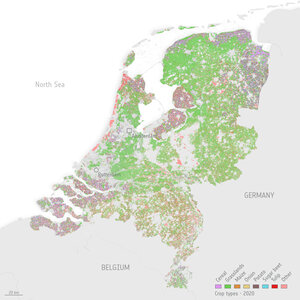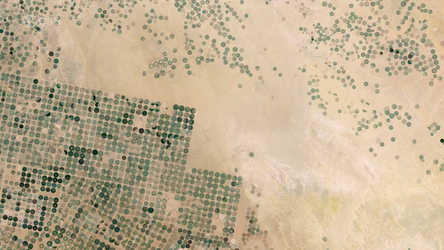Accept all cookies Accept only essential cookies See our Cookie Notice

About ESA
The European Space Agency (ESA) is Europe’s gateway to space. Its mission is to shape the development of Europe’s space capability and ensure that investment in space continues to deliver benefits to the citizens of Europe and the world.
Highlights
ESA - United space in Europe
This is ESA ESA facts Member States & Cooperating States Funding Director General Top management For Member State Delegations European vision European Space Policy ESA & EU Space Councils Responsibility & Sustainability Annual Report Calendar of meetings Corporate newsEstablishments & sites
ESA Headquarters ESA ESTEC ESA ESOC ESA ESRIN ESA EAC ESA ESAC Europe's Spaceport ESA ESEC ESA ECSAT Brussels Office Washington OfficeWorking with ESA
Business with ESA ESA Commercialisation Gateway Law at ESA Careers Cyber resilience at ESA IT at ESA Newsroom Partnerships Merchandising Licence Education Open Space Innovation Platform Integrity and Reporting Administrative Tribunal Health and SafetyMore about ESA
History ESA Historical Archives Exhibitions Publications Art & Culture ESA Merchandise Kids Diversity ESA Brand Centre ESA ChampionsLatest
Space in Member States
Find out more about space activities in our 23 Member States, and understand how ESA works together with their national agencies, institutions and organisations.
Science & Exploration
Exploring our Solar System and unlocking the secrets of the Universe
Go to topicAstronauts
Missions
Juice Euclid Webb Solar Orbiter BepiColombo Gaia ExoMars Cheops Exoplanet missions More missionsActivities
International Space Station Orion service module Gateway Concordia Caves & Pangaea BenefitsSpace Safety
Protecting life and infrastructure on Earth and in orbit
Go to topicAsteroids
Asteroids and Planetary Defence Asteroid danger explained Flyeye telescope: asteroid detection Hera mission: asteroid deflection Near-Earth Object Coordination CentreSpace junk
About space debris Space debris by the numbers Space Environment Report In space refuelling, refurbishing and removingSafety from space
Clean Space ecodesign Zero Debris Technologies Space for Earth Supporting Sustainable DevelopmentLatest
Applications
Using space to benefit citizens and meet future challenges on Earth
Go to topicObserving the Earth
Observing the Earth Future EO Copernicus Meteorology Space for our climate Satellite missionsCommercialisation
ESA Commercialisation Gateway Open Space Innovation Platform Business Incubation ESA Space SolutionsLatest
Enabling & Support
Making space accessible and developing the technologies for the future
Go to topicBuilding missions
Space Engineering and Technology Test centre Laboratories Concurrent Design Facility Preparing for the future Shaping the Future Discovery and Preparation Advanced Concepts TeamSpace transportation
Space Transportation Ariane Vega Space Rider Future space transportation Boost! Europe's Spaceport Launches from Europe's Spaceport from 2012Latest
Mapping Germany’s agricultural landscape
Thank you for liking
You have already liked this page, you can only like it once!
Combining images captured by the Copernicus Sentinel-2 mission and the US Landsat-8 satellite between October 2015 and the end of 2016, this land-cover classification map shows different crops across Germany. A total of 2.2 TB of data were used to generate the map, which distinguishes between 21 land cover classes and includes 15 specific crop types.
Click on the box in the lower-right corner to view this image at its full 30 m resolution directly in your browser.
Clear pixels from all the satellite images were used to create a time series of 45 composites, each capturing the surface reflectance over a 10-day period, which can be related to crop type. Latest machine-learning software allowed this detailed map to be generated for the entire country.
While this early version of the map is still to be improved on, validation over the Brandenburg, Mecklenburg-Vorpommern and Bayern regions indicate an overall accuracy of 76%, with several crop types such as rapeseed, maize and sugar beet achieving accuracies of over 90%.
Having such detailed, spatially explicit, wall-to-wall results on land cover and crop types is a valuable source of information for a range of applications. Uses include supporting policies such as the EU Common Agricultural Policy, modelling biochemical fluxes and pollution, analysing land-use change, conserving biodiversity and managing natural resources.
Europe’s Copernicus Sentinel-2 mission provides important information for monitoring vegetation. Its multispectral camera has 13 spectral bands and is the first of its kind to include three bands in the ‘red edge’, which provide key data on vegetation state. The mission was designed to provide images that can be used to distinguish between different crop types as well as data on numerous plant indices, such as leaf area, leaf chlorophyll and leaf water – all essential to monitor plant growth accurately.
-
CREDIT
contains modified Copernicus Sentinel and Landsat data (2015–16), processed and analysed by Humboldt University Berlin/P. Griffiths (ESA Living Planet Research Fellow) in collaboration with the Leibniz Centre for Agricultural Landscape Research (ZALF). Data preprocessing: NASA and Harmonized Landsat–Sentinel initiative -
LICENCE
ESA Standard Licence and Additional permission may be required
(contact spaceinimages@esa.int for further information)

Czechered landscape

Agricultural monitoring in Spain

Czech Republic Leaf Area Index

Crop type for all agricultural parcels in the Netherlands















 Germany
Germany
 Austria
Austria
 Belgium
Belgium
 Denmark
Denmark
 Spain
Spain
 Estonia
Estonia
 Finland
Finland
 France
France
 Greece
Greece
 Hungary
Hungary
 Ireland
Ireland
 Italy
Italy
 Luxembourg
Luxembourg
 Norway
Norway
 The Netherlands
The Netherlands
 Poland
Poland
 Portugal
Portugal
 Czechia
Czechia
 Romania
Romania
 United Kingdom
United Kingdom
 Slovenia
Slovenia
 Sweden
Sweden
 Switzerland
Switzerland

























